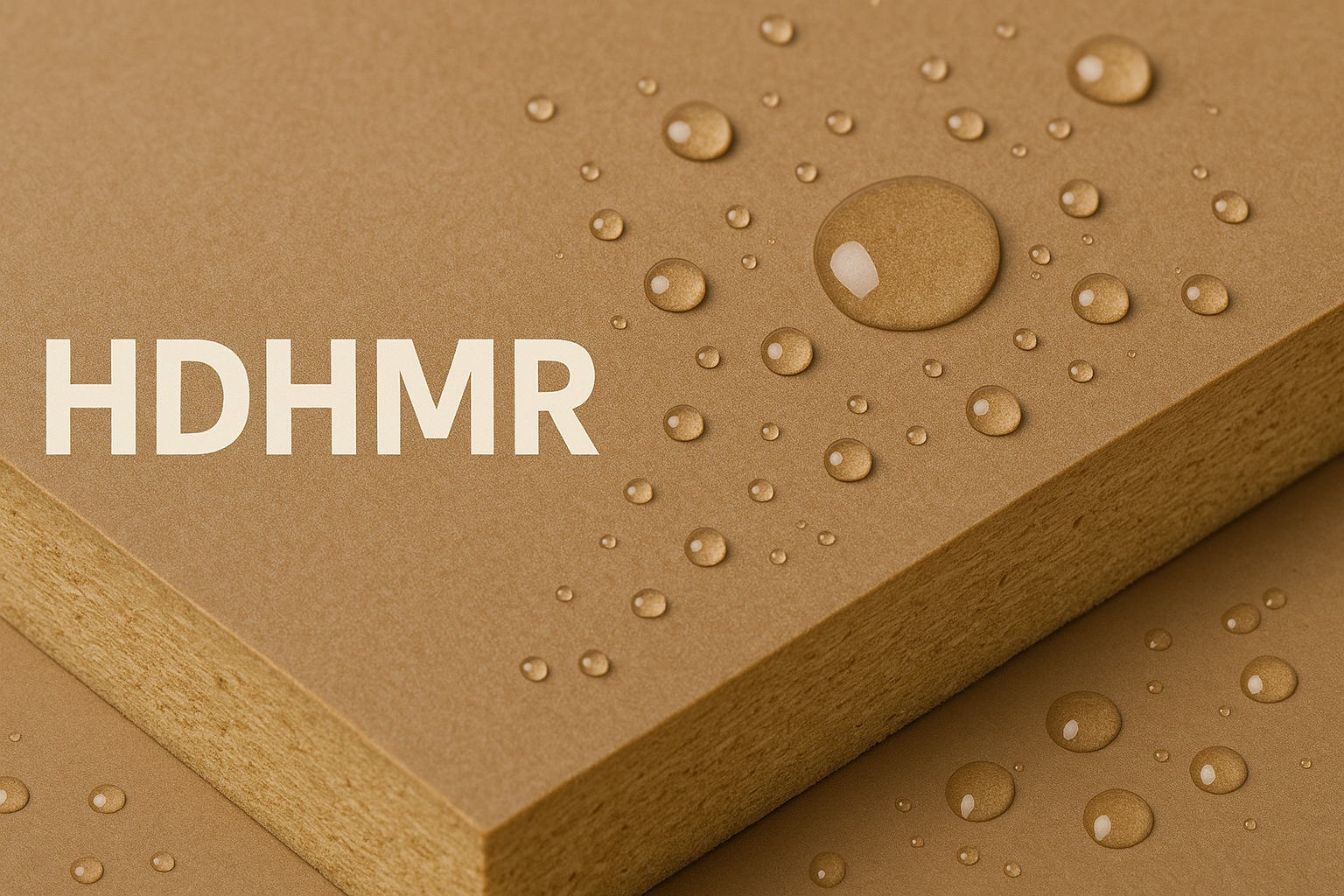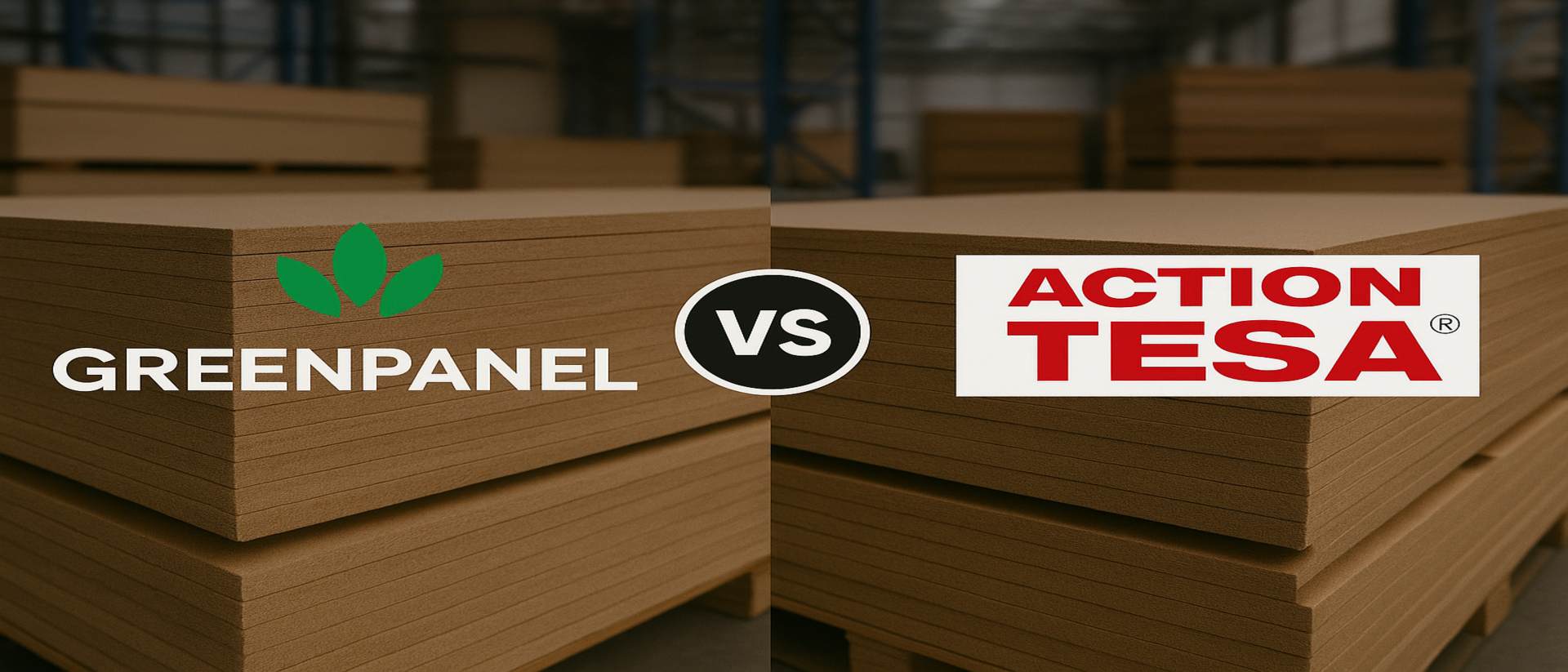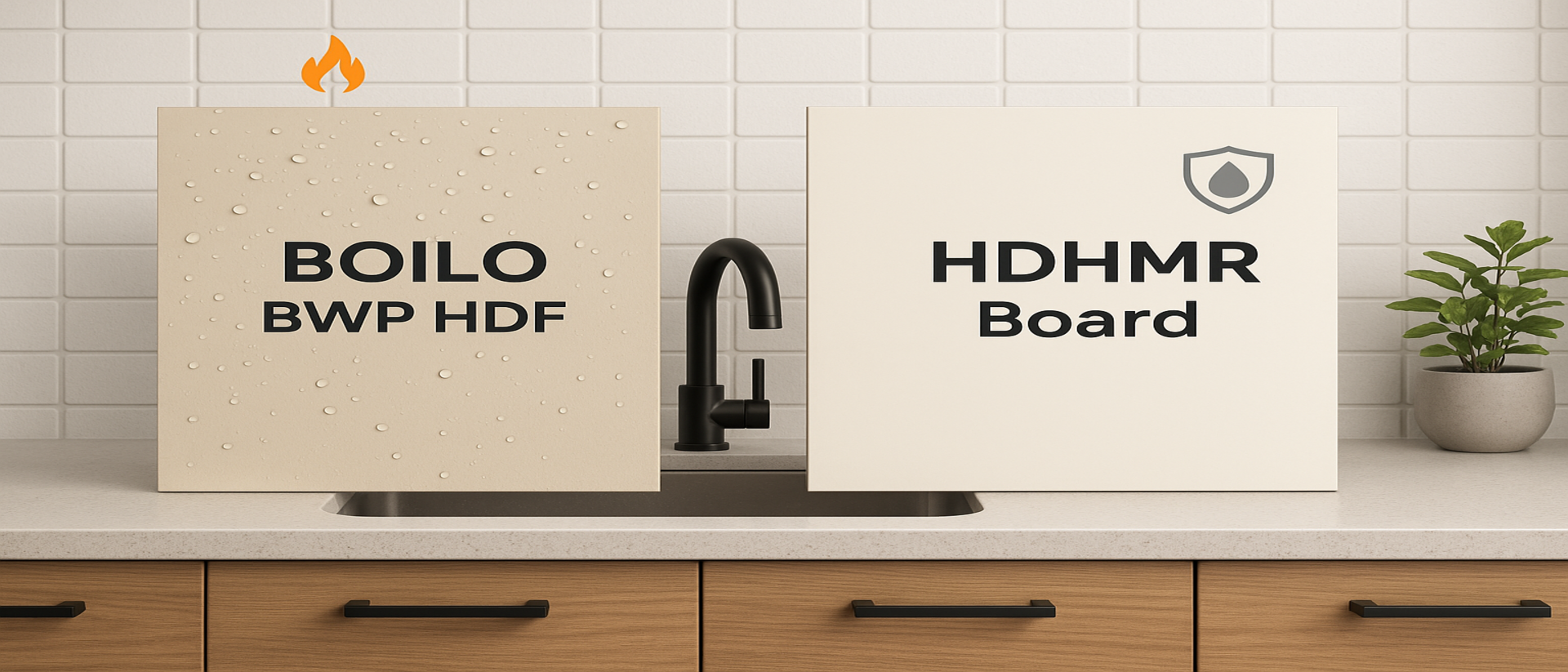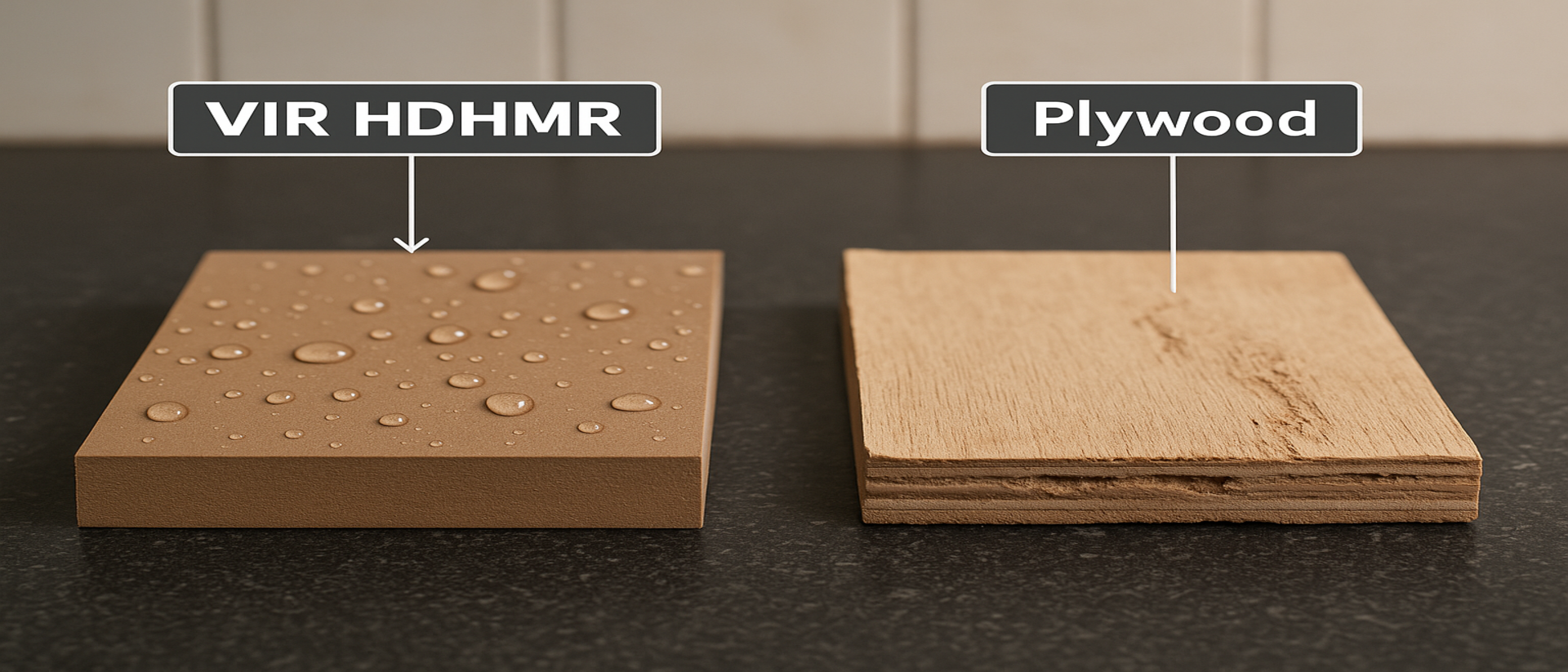HDHMR board is a modern, high-performance engineered wood product known as a superior alternative to plywood and MDF. The full form HDHMR stands for High Density High Moisture Resistance board. As the name suggests, HDHMR boards are high-density fiberboards with enhanced moisture resistance. They are manufactured by compressing wood fibers (often eucalyptus or plantation wood waste) with resins under high pressure and temperature. This process yields boards that have uniform density and a smooth surface, making them strong, moisture-resistant, termite-proof, and durable.
Features of HDHMR Board
HDHMR boards come packed with features that set them apart from conventional plywood or MDF:
· High Moisture Resistance: HDHMR can tolerate humid conditions without warping. It resists water damage far better than normal MDF or plywood, making it ideal for kitchens, bathrooms, and other damp areas. In fact, HDHMR will not swell or separate even if exposed to high humidity or occasional water spills. (Note: While HDHMR is highly moisture-resistant, it is not 100% waterproof; prolonged outdoor exposure is not recommended.)
· High Density & Strength: These boards are extremely dense and sturdy. Made from hardwood fibers and special adhesives, HDHMR’s density often exceeds 800 kg/m³ (higher than typical plywood). The result is exceptional strength and a high screw-holding capacity, meaning hinges and fasteners grip very firmly.
· Termite & Borer Resistant: HDHMR boards are chemically treated during manufacturing to be termite-proof and borer resistant. Homeowners and carpenters appreciate that HDHMR cabinetry isn’t easily eaten away by pests—a common issue with low-grade plywood.
· Smooth Finish & Workability: Thanks to the uniform fiber composition, HDHMR boards have a smooth, pre-sanded finish without voids or knots. They can be easily laminated, veneered, or painted for a high-quality look. The compact core also allows for intricate CNC routing or carving if needed. Unlike solid wood, there are no splinters or grain issues—HDHMR yields a sleek modern finish with “zero-bubble” surface quality.
· Eco-Friendly Aspect: Many HDHMR boards use 95% forest wood waste, agricultural waste, and plantation wood in their core. By utilizing waste fibers and fast-growing plantation timber (like eucalyptus), HDHMR is considered more sustainable than harvesting old-growth wood for plywood. The manufacturing process makes efficient use of materials that might otherwise be discarded.
HDHMR boards are typically available in various thicknesses, usually from about 6 mm up to 25 mm or more, to suit different applications. Common sheet size is 8×4 feet (2440×1220 mm), similar to plywood sheets.
Uses of HDHMR Board
One reason HDHMR has gained popularity is its versatility in application. Here are some of the most common uses of HDHMR boards:
· Cabinets and Furniture: HDHMR’s strength and moisture resistance make it perfect for building cabinets, wardrobes, and furniture that must endure daily use. It’s widely used for modular kitchen cabinets, bathroom vanities, and wardrobe carcasses. Carpenters find that HDHMR cabinets can handle humid kitchen conditions without warping, and the smooth surface allows for high-end finishes. The boards can bear heavy loads without sagging, so even large wardrobe shelves or bookcases made of HDHMR remain sturdy.
· Doors and Shutters: Many interior designers use HDHMR for door shutters and window frames, especially in areas with high moisture or coastal climates. HDHMR doors are dimensionally stable and termite-resistant, ensuring a longer life than regular wooden doors in moisture-prone areas. In fact, flush doors and even fire-retardant doors sometimes use HDHMR as a core material due to its density and screw-hold strength.
· Wall Paneling & Partitions: The smooth, uniform surface of HDHMR is great for decorative wall paneling. It can be laminated or veneered easily to achieve any look—wood textures, high gloss solid colors, etc.. Home interiors have used HDHMR panels for accent walls, TV unit paneling, and bed backdrops. Additionally, offices and showrooms use HDHMR for partitions and wall claddings, leveraging its acoustic dampening and durability in high-traffic areas.
· Flooring Substrate: In the flooring industry, HDHMR (and similar high-density boards) are used as a substrate for laminate flooring or as an underlayment. Its high density provides stability for floor coverings and can even offer some moisture barrier properties for flooring systems. Specialized HDHMR with tongue-and-groove profiling is used for engineered wood flooring underlayment in some cases.
· Countertops & Worktops: Given its moisture resistance, HDHMR is increasingly used as the core for laminated kitchen countertops and worktops in labs or workshops. It can take post-forming laminates (the curved edges on countertops) and holds up against water exposure, though usually a laminate surface is applied to protect the core further.
· Outdoor and Miscellaneous Uses: While not intended for prolonged outdoor exposure, HDHMR has been used in semi-outdoor applications like cafeteria furniture, garden bench frames, election cutout signboards, and temporary outdoor kiosks. Its ability to handle occasional rain and high humidity makes it a safer choice than normal particle board for such uses. Some manufacturers even market specialized exterior grade HDHMR with added water-repellent treatments for outdoor durability.
HDHMR vs. Other Materials
It helps to understand how HDHMR compares to its closest cousins: MDF, HDF, and Plywood:
· HDHMR vs MDF: Standard MDF (Medium Density Fiberboard) is similar in that it’s also made from wood fibers and resin. However, HDHMR uses a higher density fiber mix and superior adhesive technology, making it denser, stronger, and much more moisture-resistant than MDF. MDF tends to swell and weaken with moisture and has lower screw holding capacity; HDHMR addresses these issues. In fact, one source notes HDHMR boards have a lifespan of 12–15 years in humid environments, outlasting MDF’s typical 5–10 years. If you need something for a humid area or heavy-duty use, HDHMR is the better choice over MDF.
· HDHMR vs HDF: HDF (High Density Fiberboard) is essentially very dense MDF usually used for flooring or thin panels. HDHMR can be considered an upgraded HDF with moisture-resistant resins. Both have similar density ranges (700–900+ kg/m³), but HDHMR’s claim to fame is the moisture resistance. If you see the term HDF-HMR (High Density Fiberboard – High Moisture Resistance), it’s essentially the same concept as HDHMR. For practical purposes, HDHMR and HDF might perform similarly in strength, but HDHMR is tailored for areas where HDF would fail due to moisture.
· HDHMR vs Plywood: Plywood has been the standard for decades, made of wood veneers glued in layers. A good grade of plywood (especially BWP marine grade) has decent moisture resistance and strength. HDHMR outperforms normal plywood in surface finish, termite resistance, and often in consistent strength (no knots or core gaps). It’s also more eco-friendly when made from waste fibers. However, traditionalists note that marine plywood is still a bit better for extreme water exposure and overall tensile strength in structural uses. In interiors, though, HDHMR is rapidly replacing plywood for furniture. It’s heavier than plywood of the same thickness, but the trade-off is a more stable, ready-to-finish board. Cost-wise, HDHMR boards are priced comparable to premium plywood; in fact some HDHMR can be more cost-effective than BWR/BWP plywood for interiors with high moisture.
In summary, HDHMR boards combine the best of engineered wood technology to create panels that are moisture-resistant, heavy-duty, and versatile for a wide range of uses. Their advent has “revolutionized the interior infrastructure industry” by providing a reliable plywood alternative at a nominal cost. As this material gains popularity in India, it’s becoming the first preference for homeowners, architects, and designers who need durable and eco-friendly wood-based products. Whether you’re planning a kitchen makeover or new furniture, HDHMR board is definitely a material worth considering for its blend of strength and resilience.
Disclaimer: This article is generated using AI-assisted research and is intended for informational purposes only. While we strive for accuracy, readers are advised to verify all technical, pricing, and brand-specific details with official sources. hdhmr.in is not liable for any decisions made based on this content.




